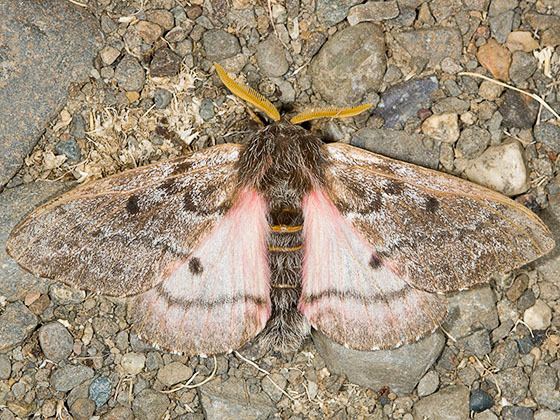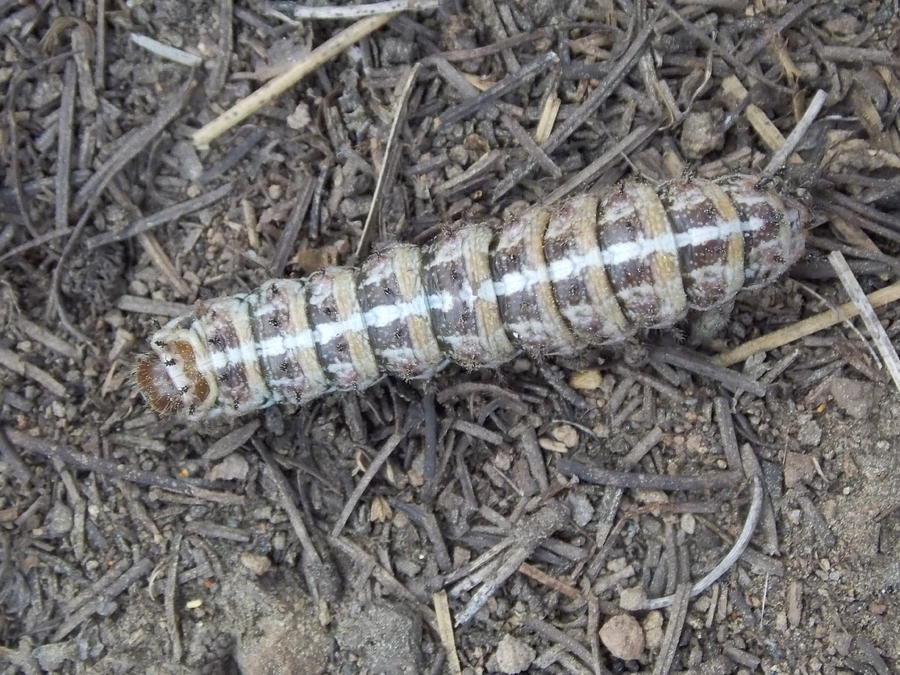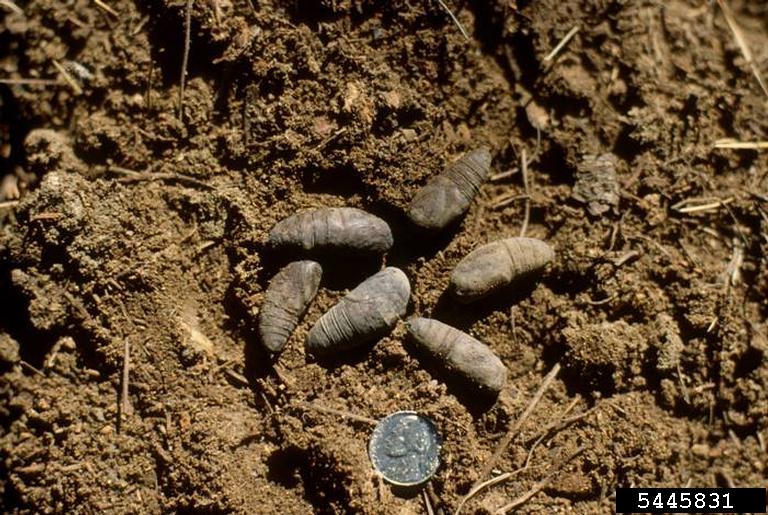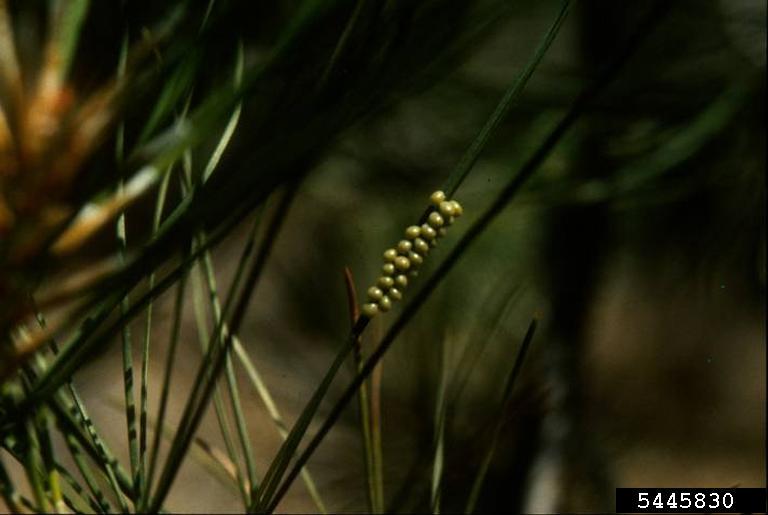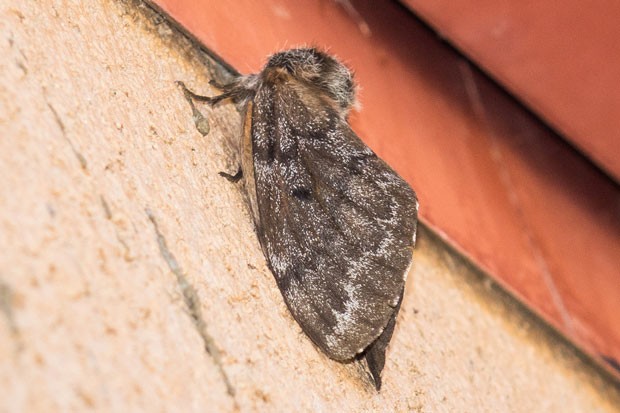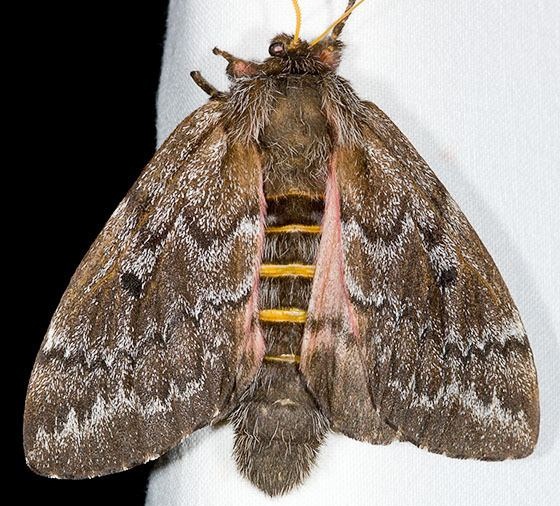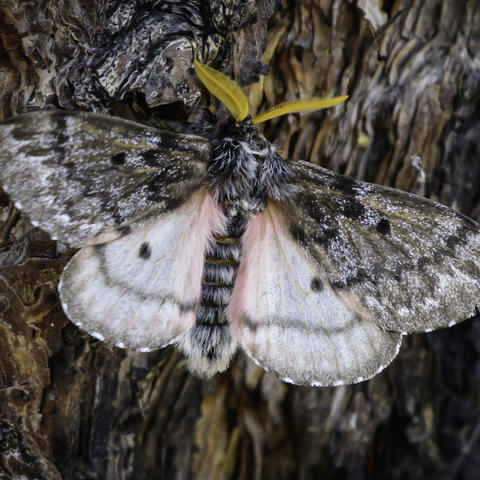Pandora Moth (Coloradia pandora)
Pandora moth, alternately called the pandora pinemoth, is a part of the Saturniidae family indigenous to the United States’ western parts. This species’ larvae are known to cause major destruction to foliage of several pine tree species like ponderosa pine and lodgepole.
The Paiute people native to the Mono Lake and Owens Valley regions of California consumed these moths’ larvae after storing and cooking, giving them the name piuga. Because of this reason, these natives and the United States Forest Services (USFS) entered into a conflict as the latter attempted to control the pandora moth’s numbers by spraying insecticides.
Scientific Classification
- Family: Saturniidae
- Genus: Coloradia
- Scientific Name: Coloradia pandora
Description and Identification
Caterpillar
The larvae, when newly hatched, have a dark brown or black body with a black head and spiny body. In the intermediate stage, they are deep brown with two white lines appearing on their bodies’ upper side. Upon maturation, their head becomes orange-brown while the body first gets dark brown and then greenish-yellow, with yellow bands and white stripes. Their body is segmented with spiny projections on each part that could cause stinging effects if touched.
Adult Moth
Sexual Dimorphism: Present but not prominent
The males have larger and more feathery antennae than their female counterparts. The females, on the other hand, appear more massive.
Color Appearance:
Forewings: When opened, it appears brownish gray. When closed, thecolor remains the same.
Hindwings: When opened, it is pinkish gray with a wavy line running across alongside black dots. When closed, the two black dots are seen on both sides, though the pinkish color is not prominent enough.
Average Wingspan: 7 – 13 cm
Flight Pattern: Consistent
Season: July – September
Quick Facts
| Other Names | Pandora pinemoth |
| Distribution | Western United States (covering parts of Montana, southern portions of New Mexico, Arizona, Oregon, and southern California) |
| Habitat | Mostly in pine forests |
| Predators | Rodents, chipmunks, and ground squirrels (prey on pupa); birds (prey on larva) |
| Lifespan of Adults | About six months |
| Host Plants | Pine tree species like ponderosa pine, lodgepole, and Jeffrey |
| Adult Diet | Don’t feed |
Did You Know
- C.A Blake described this species for the first time in 1863.
- As mentioned above, the Paiute people eat the larvae as a finger food consuming all of it except the head. When boiled, their odor likens to that of cooked mushrooms.
Scientific Classification
- Family: Saturniidae
- Genus: Coloradia
- Scientific Name: Coloradia pandora

